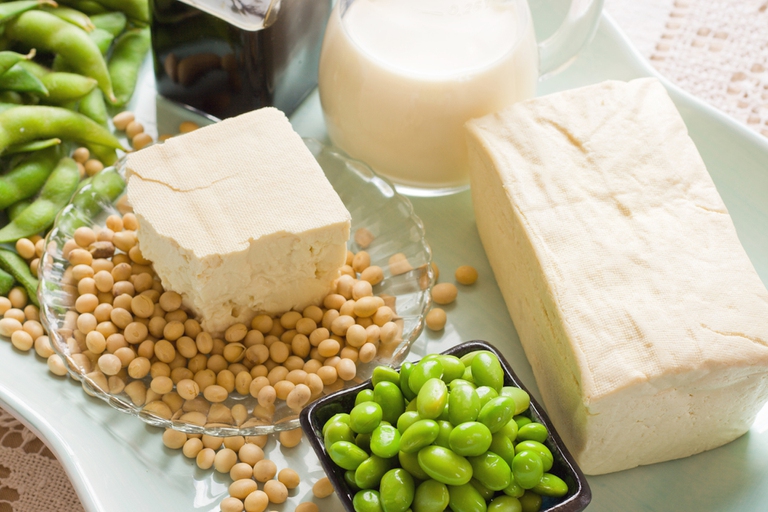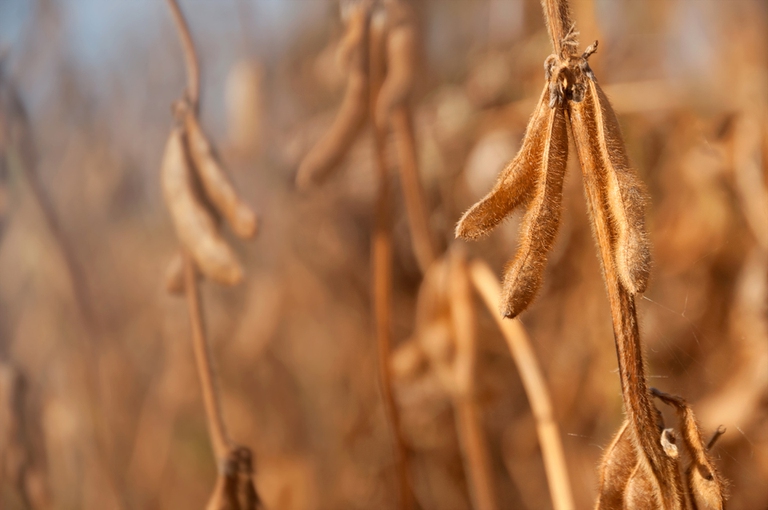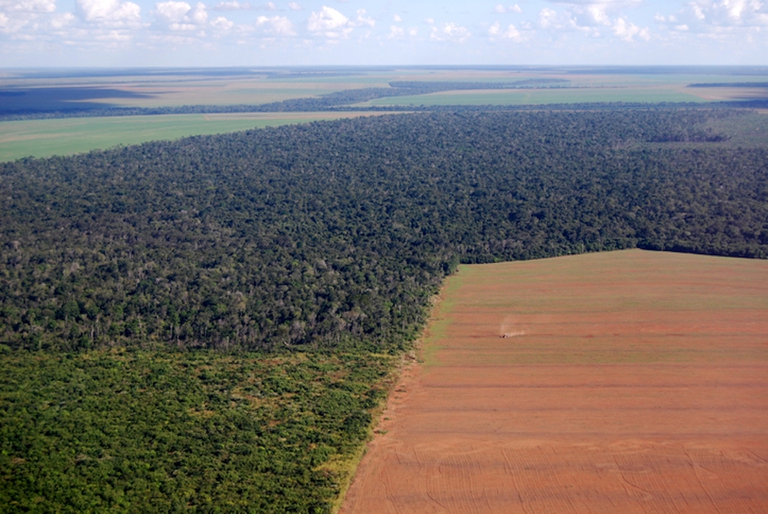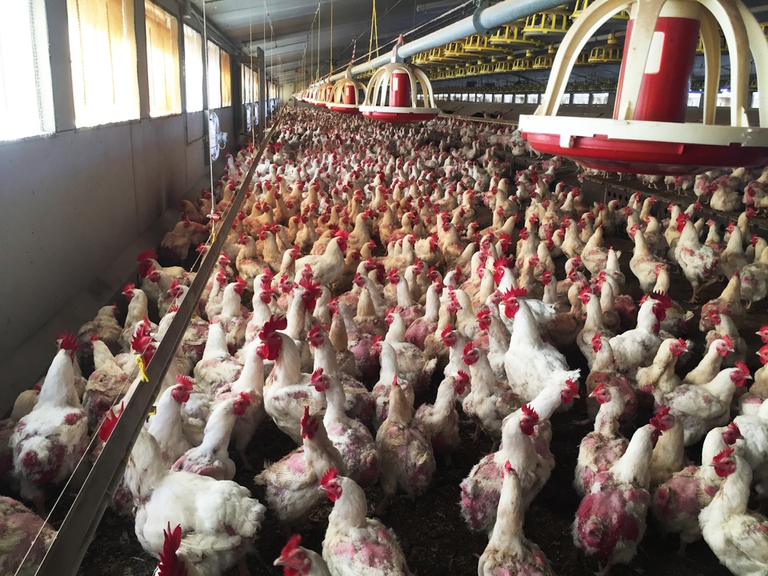https://www.lifegate.it/soia-deforestazione-impatto-ambientale-coltivazioni
- |
- The success of soy is due to its richness in proteins.Flours, oils, "milk", plant foods, additives and biofuels are also produced from this legume.
- The expansion of soybean cultivation is among the main causes of deforestation, mainly in South America where Brazil is the leading producer of this legume.
- However, most of the soy produced is not intended for human consumption:75 percent is used in the production of feed for farm animals.
Since it is the richer than proteins among legumes (37 g per 100 g of product), the soy it is a privileged food in the diet of vegetarians and vegans, but also – and above all – in that of animals in intensive farming.In addition to consumption as a legume, they are obtained from it flours (widely used in animal feed), oil and vegetable milk;soy, then, is based on many vegetable products such as tofu, tempeh, miso.From this legume we also obtain the lecithin, a additive used in the food industry as an emulsifier with the acronym E322; finally, they can be produced with soy biofuels.

In recent decades, soy has also become the most controversial legume because its intensive cultivation has a negative environmental impact, primarily with regards to deforestation in tropical areas which has among other consequences the increase in global warming and the loss of ecosystems And biodiversity.
Soy, the most cultivated GMO in the world
Cultivated since ancient times China, soybean spread at the beginning of the 20th century to other geographical areas to the point where it currently represents one of the largest crops globally.In 1996, one was produced in the United States genetically modified soy to resist herbicides (especially glyphosate) and according to i Isaaa data for 2019, soy is thegmo most cultivated in the world:by number of cultivated hectares represents the 48 percent of the global surface area cultivated with GMOs.
The use of GMO soy in (non-organic) animal feed is not reported on the label of meat and fish
As regards transparency, although GMO soya and GMO feed must be labeled as such, there is no obligation, however, to indicate in themeat label if the animal was fed with GMO feed.It represents an exception organic meat Why in the organic sector the feed used is organic and cannot contain GMOs.
Another problem regarding GMO soy is the massive use of pesticides necessary for its cultivation:a recent study has highlighted a link between the expansion of soybean cultivation in Brazil (and therefore the increase in the use of pesticides) with the increase in mortality due to childhood cancer.
Soybeans, major producers and major importers
The soybean crop of Brazil, the world's leading producer, is around 150 million tonnes per year produced on 44 million hectares.Together with United States And Argentina, Brazil produces the80 percent of soya grown in the world, while the largest importers are the China (imports 60 percent of all global production) and theEuropean Union.

Deforestation caused by intensive soy cultivation
According to one esteem of the FAO, between 1990 and 2020, 420 million hectares of forests – an area larger than the European Union – would have been converted into land for agricultural use with orpalm oil and soybeans responsible for more two thirds of deforestation.

As reported by the WWF, in the world, between 2001 and 2015, soybean cultivations increased replaced 8.2 million hectares of forest.97 percent of this deforestation occurred in South America where the production of the legume is almost tripled in recent decades and it is expected will further double by 2050:in particular, 61 percent of deforestation was recorded in Brazil (Amazon And Cerrado), 21 percent in Argentina, 9 percent in Bolivia and 5 percent in Paraguay.
In 2006 the agreement was stipulated in Brazil Amazon has a moratorium, a formal commitment from retailers not to purchase soybeans from newly grown areas. According to a study, the moratorium would have avoided, between 2006 and 2016, the destruction of beyond 18 thousand square kilometers of forest, but another investigation revealed that some growers manage to circumvent the moratorium and what a tBetween 2009 and 2019, in the Brazilian state of Mato Grosso alone, 1,180 square kilometers of Amazon forest were destroyed to make room for illegal crops.
What does meat consumption have to do with deforestation caused by crops?
What is very important to underline is that of all the soy produced, only a small part is intended for human consumption.The WWF also reveals that the 75 percent of the global harvest of the legume is actually used for the production of flour for animal feed on farms intensive that meet the global demand for meat, eggs and dairy products. According to a study by the environmental association, every European citizen consumes 60.6 kg of soya per year, of which over 90 percent (i.e. 55 kg) is hidden in meat, fish and animal derivatives.The direct consumption of this legume in our diet amounts to only 3.5 kilos per year per person.

In some cases, as for the chicken and salmon, the amount of soy used as feed is almost equal to that of the final food produced:they are in fact necessary 95 grams of soy to produce 100 grams of farmed salmon, you need 96 grams per 100 grams of chicken breast and 41.5 grams per 100 grams of pork.
A European law to combat deforestation which also concerns soya
On 19 April 2023 the European Parliament definitively approved a law to combat deforestation which provides that companies can only sell in the EU products whose supplier has issued a declaration attesting that the product does not come from deforested land and did not contribute to forest degradation.Businesses must also verify that such products comply with the relevant legislation of the country of production, including on human rights, and that the rights of indigenous populations interested parties have been respected.Among the products affected by the new legislation are the soy, but also livestock, cocoa, coffee, palm oil and wood, including the products they contain, have been fed with or have been produced using these products (e.g. leather, chocolate and furniture).Also included are rubber, coal, printed paper products and a range of palm oil derivatives.
